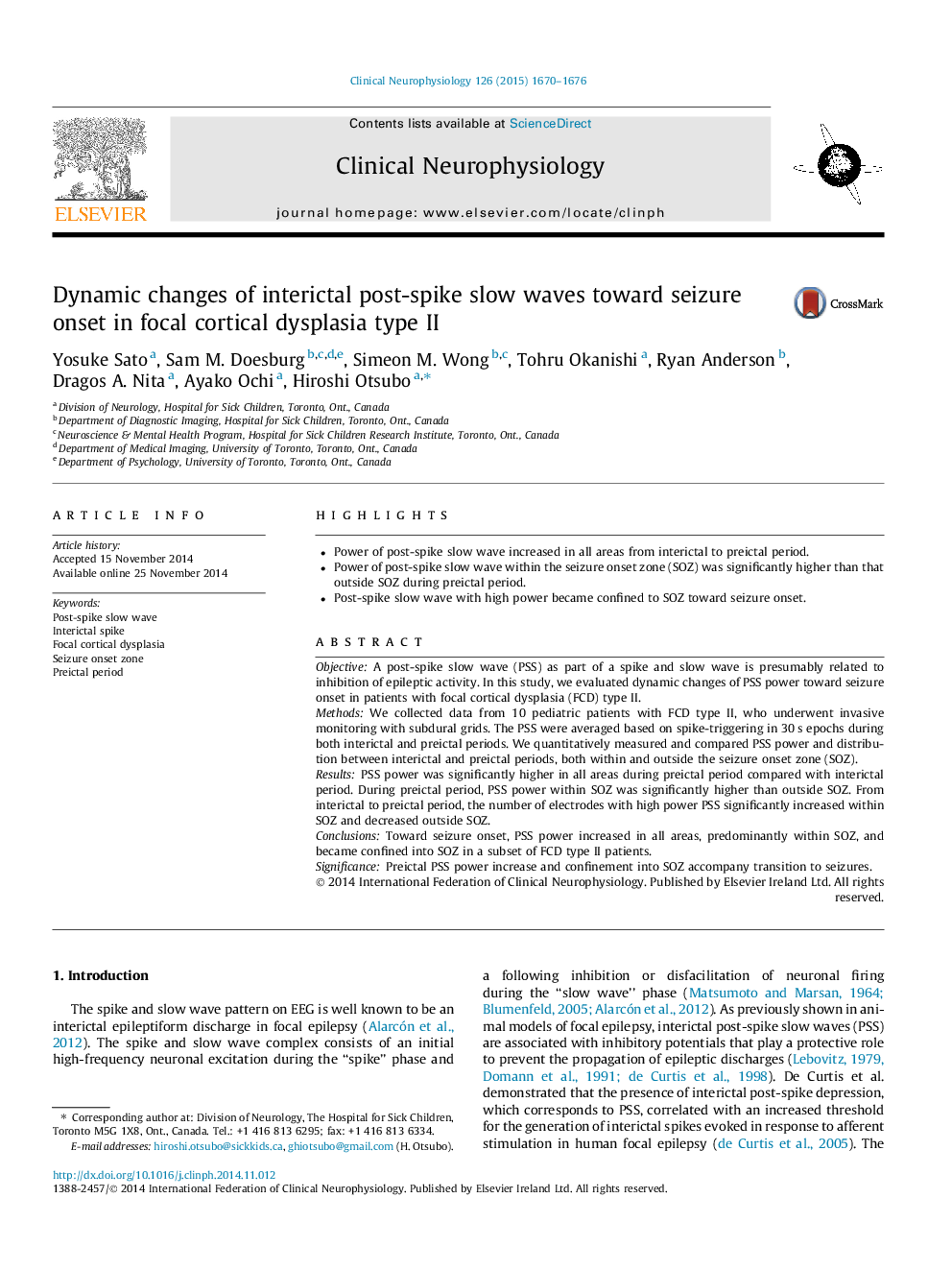| Article ID | Journal | Published Year | Pages | File Type |
|---|---|---|---|---|
| 3042814 | Clinical Neurophysiology | 2015 | 7 Pages |
•Power of post-spike slow wave increased in all areas from interictal to preictal period.•Power of post-spike slow wave within the seizure onset zone (SOZ) was significantly higher than that outside SOZ during preictal period.•Post-spike slow wave with high power became confined to SOZ toward seizure onset.
ObjectiveA post-spike slow wave (PSS) as part of a spike and slow wave is presumably related to inhibition of epileptic activity. In this study, we evaluated dynamic changes of PSS power toward seizure onset in patients with focal cortical dysplasia (FCD) type II.MethodsWe collected data from 10 pediatric patients with FCD type II, who underwent invasive monitoring with subdural grids. The PSS were averaged based on spike-triggering in 30 s epochs during both interictal and preictal periods. We quantitatively measured and compared PSS power and distribution between interictal and preictal periods, both within and outside the seizure onset zone (SOZ).ResultsPSS power was significantly higher in all areas during preictal period compared with interictal period. During preictal period, PSS power within SOZ was significantly higher than outside SOZ. From interictal to preictal period, the number of electrodes with high power PSS significantly increased within SOZ and decreased outside SOZ.ConclusionsToward seizure onset, PSS power increased in all areas, predominantly within SOZ, and became confined into SOZ in a subset of FCD type II patients.SignificancePreictal PSS power increase and confinement into SOZ accompany transition to seizures.
